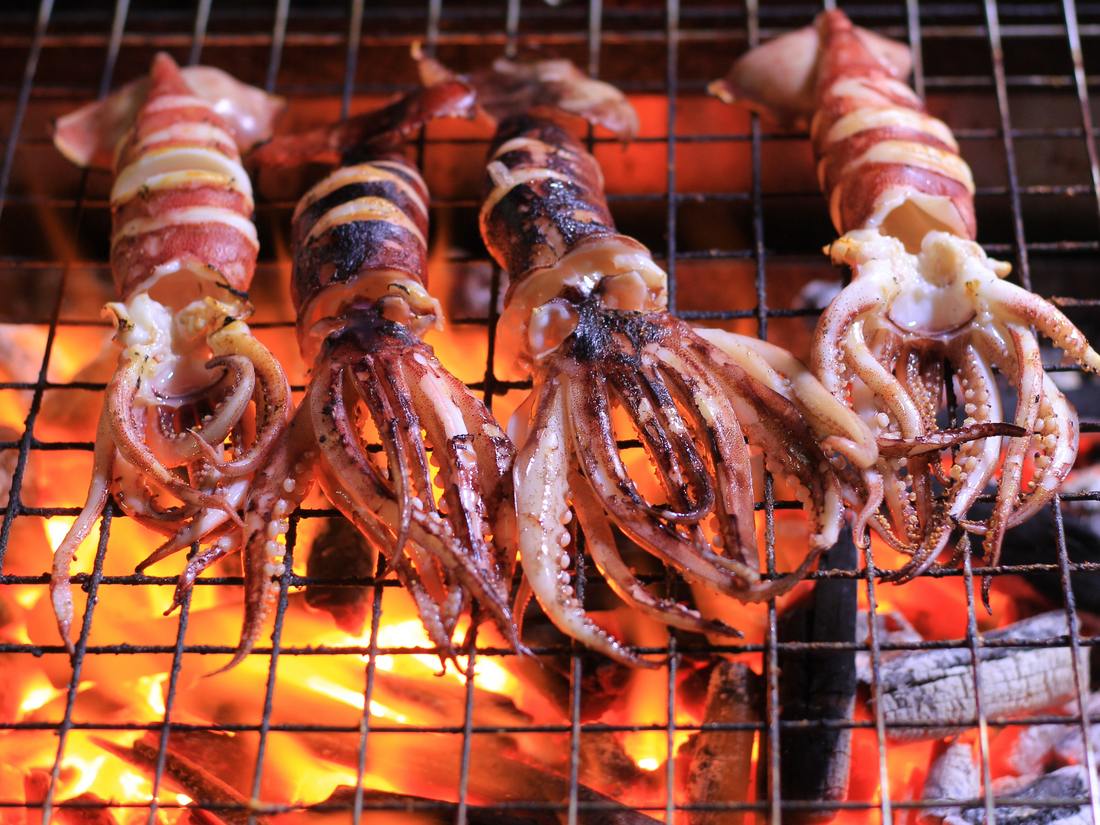
ALL YOU NEED TO KNOW ABOUD SQUID (SOTONG)
Share
Squid — or sotong as it’s popularly known in Singapore — is one of the most versatile and beloved types of seafood. Whether it’s crispy calamari rings, sambal sotong from the hawker centre, or Japanese-style grilled squid, this cephalopod has earned a place in cuisines all over the world.
At Dish The Fish, we offer wild-caught squid and wild-caught baby squid (sotong) that are carefully cleaned, portioned, and blast-frozen to lock in freshness. This ensures you get restaurant-quality seafood delivered right to your doorstep in Singapore.
If you’ve ever wondered how to choose, clean, and cook squid without it turning rubbery, this guide covers everything you need to know.
What is Squid (Sotong)?
Squid is a soft-bodied seafood with a tubular body and tentacles. Closely related to cuttlefish and octopus, squid is leaner and cooks much faster. Its mild, slightly sweet flavour makes it an excellent choice for stir-fries, grills, and soups.
In Singapore and Malaysia, squid (sotong) is a must-have in dishes like sambal sotong, sotong mee goreng, and barbecued sotong. In Western cuisine, squid is better known as calamari, usually served fried and crispy.
Try our Wild-Caught Squid (Sotong) or Wild-Caught Baby Squid for fresh, high-quality sotong delivered to your home.
What’s the Difference Between Squid and Baby Squid?
While both come from the same family, there are a few key differences:
Size
Squid – Larger in size (usually 15–30 cm), meatier, and ideal for grilling, braising, or slicing into rings for calamari.
Baby Squid – Much smaller (under 10 cm), more tender, and cooks extremely quickly.
Texture
Squid – Firmer bite, slightly chewier when overcooked.
Baby Squid – Delicate and soft, often preferred in stir-fries and quick wok dishes.
Taste
Squid – Mildly sweet, with a stronger “seafood” profile when grilled or braised.
Baby Squid – Even sweeter and lighter, which makes it more approachable for kids and first-time seafood eaters.
Cooking Uses
Squid – Perfect for sambal sotong, grilled sotong with sauce, calamari rings, or stuffed preparations.
Baby Squid – Best enjoyed whole in stir-fries, tempura, or simple garlic-butter sautés.
What are the nutritional benefits of eating squid?
Many people love squid for its taste, but it’s also packed with nutrients:
High in protein – Great for muscle repair and growth
Low in fat and calories – A lighter seafood choice
Rich in minerals – Especially zinc, copper, and selenium for immune and metabolic health
Vitamin B12 powerhouse – Supports healthy energy levels and brain function
Contains omega-3 fatty acids – Beneficial for heart health
For a healthier option, try stir-fried, grilled, or braised squid instead of deep-fried calamari.
How to Buy Good Quality Squid?
When buying squid or sotong in Singapore, here’s what to look out for:
Firm flesh – Squid should feel springy, not mushy.
Clear eyes – Look for bright, shiny eyes (if whole).
Fresh ocean smell – A clean sea scent, not overly fishy.
How to Clean and Prepare Squid at Home?
If you buy whole squid, here’s a step-by-step guide:
- Pull the head and tentacles away from the body.
- Remove the transparent quill from inside the body.
- Slice just below the eyes and discard the beak.
- Peel away the skin if you prefer a white finish.
- Rinse thoroughly before cooking.
If you prefer convenience, simply buy from us at Dish The Fish! Our squid comes cleaned and portioned — perfect for quick meals.
What are the Best Ways to Cook Squid?
The golden rule: cook squid either very quickly (under 2 minutes) or very slowly (over 30 minutes). Anything in between tends to make it rubbery.
Popular cooking methods include:
Stir-Fried Squid (Sambal Sotong) – Quick, spicy, and flavourful
Grilled Squid – With soy, miso, or teriyaki glaze
Deep-Fried Calamari – Crispy, golden rings with dipping sauce
Braised Squid – Slow-cooked in stews for melt-in-mouth texture
Stuffed Squid – Filled with rice, herbs, or minced meat
For families, stir-fried or grilled baby squid is a fast and kid-friendly way to introduce seafood. Below, we list a home-cooked favourite that everyone in the family will love.
Recipe Spotlight: Sotong Stuffed with Minced Pork and Chestnuts
Stuffed squid (sotong) is a well-loved dish in many Singaporean and Peranakan households. The tender squid body is used as a natural casing, filled with a savoury pork and chestnut mixture, then simmered in a rich sauce until juicy and flavourful.
Ingredients
- 6 medium wild-caught squid cleaned (reserve tentacles)
- 200g minced pork
- 50g water chestnuts, finely chopped
- 1 small carrot, finely diced
- 2 cloves garlic, minced
- 1 tbsp soy sauce
- 1 tbsp oyster sauce
- ½ tsp white pepper
- 1 tsp sesame oil
- Toothpicks (for sealing)
Sauce
- 1 tbsp oyster sauce
- 1 tbsp light soy sauce
- ½ tbsp dark soy sauce
- 200ml chicken stock or water
Method
- Prepare the filling – Mix minced pork, chopped tentacles, water chestnuts, carrot, garlic, soy sauce, oyster sauce, sesame oil, and pepper until well combined.
- Stuff the squid – Carefully spoon the filling into each squid tube until ¾ full (leave space for expansion). Seal the opening with a toothpick.
- Pan-sear – Heat a little oil in a pan and sear the stuffed squid on all sides until lightly browned.
- Simmer in sauce – Add oyster sauce, soy sauces, and chicken stock to the pan. Cover and simmer for 20 minutes on low heat until squid is tender and filling is cooked through.
- Serve – Slice into thick rings and drizzle with sauce before serving.
💡 Tip: This dish pairs beautifully with steamed rice or bee hoon, and makes an impressive centrepiece for family dinners.
At Dish The Fish, we provide wild-caught squid and baby squid that are carefully sourced, cleaned, and frozen to ensure you get the best quality possible.
